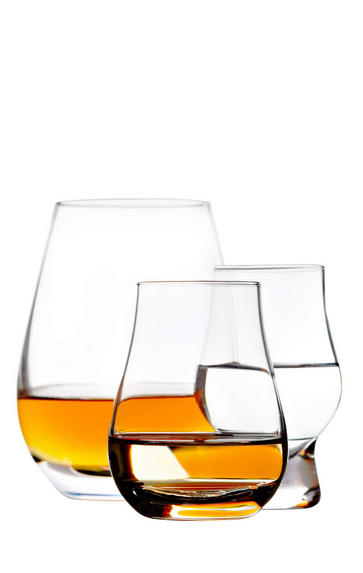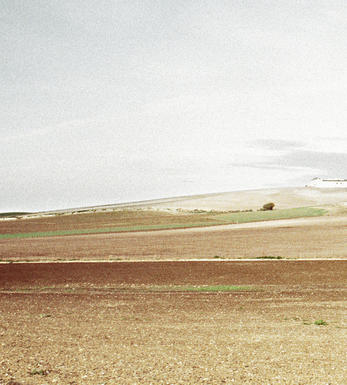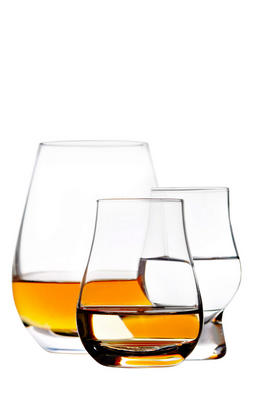
About this SPIRIT

Equipo Navazos
The story of Navazos Project is the story of a passion, a passion shared by an ample group of lovers and connoisseurs of traditional Andalusian wines. Aware of the sleeping treasures that rested buried in the cellars of Jerez, Sanlúcar and El Puerto, as well as in and around Montilla, they have decided to rescue some of these jewels and bottle them in very limited series for their own enjoyment and that of friends from Spain, Germany, the United Kingdom and the U.S., mostly friends from the wine world: oenologists, wine writers, distributors, sommeliers, as well as deeply knowledgeable aficionados.
It all began in December of 2005 during a visit to a small and antique bodega in Sanlúcar, when these Sherry lovers “discovered” several dozen butts of an exceptionally fine old amontillado that had spent twenty years without running, unsold. They selected the equivalent volume of a butt and bottled it privately under a brand name that evokes Edgar A. Poe’s popular story “The Cask of Amontillado”: La Bota de Amontillado NAVAZOS. These scarce 600 bottles triggered the hunting activities of Equipo Navazos (‘Navazos Team’). Another two selections, still exclusively intended for private circulation, would appear along 2006. The results aroused great enthusiasm among this reduced circle of partners, and limited releases of later selections appeared in the market through several important distributors that had participated in the venture from the beginning.
The wines are bottled in limited series, in successive numbered editions of dated releases (the date of each saca or withdrawal has been precisely stated on the label) so that aficionados can deliberately compare different editions of the same solera if they so desire. This also enables a precise following of their evolution, since—like all great wines—these are expected to evolve during their bottle life. The first editions were made available exclusively within a private circle, so, should you find any one around by chance, its origin will be invariably the reduced quota of one in the thirty or so private “partners” whose support and enthusiasm have made this project possible.

Sherry
The "Jerez-Xérès-Sherry" Denomination of Origin lies in the so-called "Sherry triangle" that is formed by the cities of Jerez de la Frontera , El Puerto de Santa María and Sanlúcar de Barrameda in the province of Cadiz.
Palomino Fino is the primary variety for Sherry wines, and it thrives on the unique "albariza" chalky white soil of the region.
Pedro Ximénex (aka PX) is also grown in smaller scale, and used for sweetening dry Palomino sherries or for the production of its own single-varietal , aged, naturally sweet wines. PX grapes are sun-dried after harvest to concentrate sugars and they impart the wine with an intense dried-fruits flavour and bouquet. Finally, Moscatel grapes (aka Moscatel de Alejandría) are made to dessert wines bearing the same name.
Sherry starts its life as a dry-fermented white wine, then fortified with the addition of grape spirit. A unique feature in the sherry winemaking is the blending through a system of barrels (solera system), whereby wine is drawn out off the bottom-row of barrels, and then replenished from younger wine from the rows above. In this way, new wines take on characteristics of the older wines. The age that the wine spends in the solera system varies according to the desired style or quality level.
In the past two decades, Sherry has enjoyed both a transformation and a renaissance; It have become drier, fresher (for Finos) or more complex and longer matured (for darker styles like Olorosso). The versatile food-matching qualities have been promoted by the producers (of course this `innovation' is nothing new to the Spanish, who have drunk Sherry with food for centuries). We have even seen the beginnings of varietal labelling, with some producers now stating the grape variety on Sherry bottles.
Of particular interest are Almacenista Sherries - The name Almacenista means a stockholder who buys sherry, then matures it in his bodega. Almacenista Sherries are typically dry, very idiosyncratic, produced in very small quantities and aged in casks for many years. Many of these are bottled by Emilio Lustau, and Berrys are fortunate to be able to list some of the very finest examples by producers such as Miguel Fontadez Florido, Pilar Aranda Y Latorre and Manuel Cuevas Jurado.
Another style of sherry of note is En Rama, this relatively unknown type of sherry has a very distinctive flavour and, thanks to unique wine making processes, is best drunk relatively soon after purchase. It differs from conventional sherries because, unlike other wines, it is bottled straight from the cask, with no filtering or filtration. This hugely impacts the flavour, capturing all the freshness and characteristics of those wines aged under flor.
These delicately flavoured sherries are very representative of the terroir from which they come. They are also all ideally suited to a variety of foods, be it shellfish, savoury dishes or meats
Despite all this marketing activity, the fact remains that this is a wine with an exceptional diversity of style, all having in common the use of fortification at varying stages of the fermentation process and sheer value for money.
Sherry offers a range of styles: Fino, Manzanilla, Amontillado, Oloroso, Palo Cortado, Aged-Dated Sherries



Buying options
Add to wishlist
Description
Limited edition of 750 (50cl) bottles produced from Bodega Rey Fernando de Castilla in Jerez de la Frontera. Equipo Navazos collaborates with a most impressive selection of top-notch producers whose ruling principles are quality and authenticity above every other consideration. Among them is Bodegas Rey Fernando de Castilla, a Jerez-based house where Jan Pettersen and his team are engaged in a constant struggle to elevate these stunning wines and brandies to the place where they belong on the shop shelves and dinner tables of Spain and the world.
As is the norm in Bodegas Rey Fernando de Castilla, all brandy soleras are aged at the same alcoholic degree they are going to be bottled later (in this case around 42% alc.), which guarantees the roundness and mellowness of this La Bota de Brandy nº 29 "envejecido en bota de fino".Only the finest wine spirits, slowly aged and mollified to a warm alcoholic degree in top-quality fino casks. No added sugars of any sort, not even through contact with the staves of butts that had previously contained pedro ximénez or sweet oloroso. This is a pure and straight product, authentic, as its natural golden colour proves.
spirit at a glance
Delivery and quality guarantee